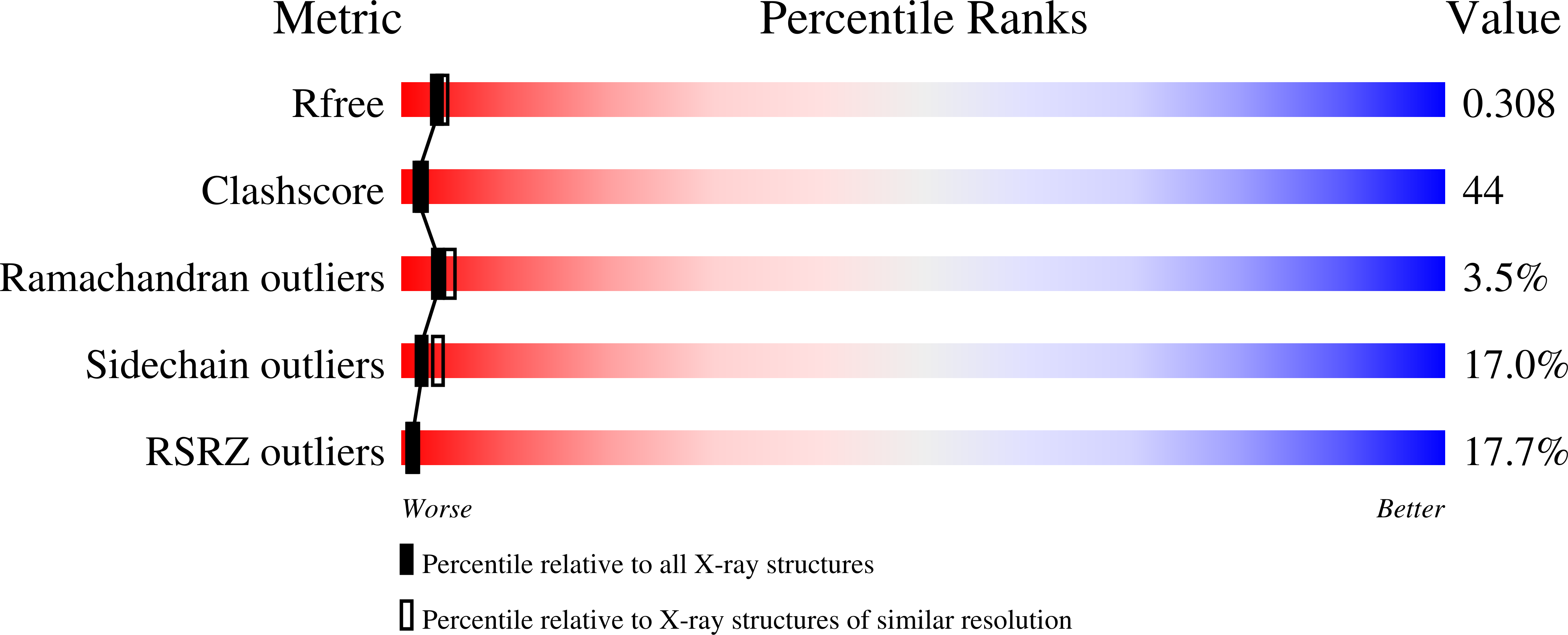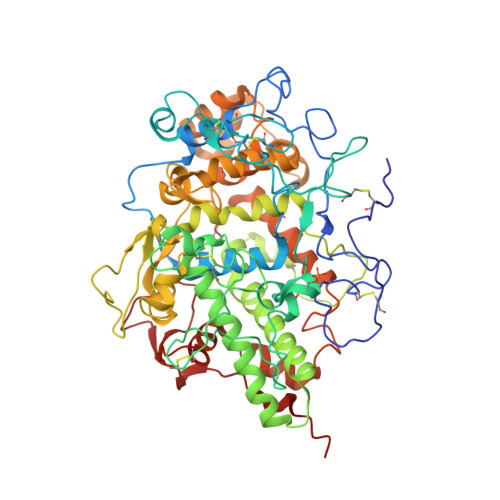Mode of binding of the tuberculosis prodrug isoniazid to heme peroxidases: binding studies and crystal structure of bovine lactoperoxidase with isoniazid at 2.7 A resolution.
Singh, A.K., Kumar, R.P., Pandey, N., Singh, N., Sinha, M., Bhushan, A., Kaur, P., Sharma, S., Singh, T.P.(2010) J Biol Chem 285: 1569-1576
- PubMed: 19907057
- DOI: https://doi.org/10.1074/jbc.M109.060327
- Primary Citation of Related Structures:
3GC1, 3I6N - PubMed Abstract:
Isoniazid (INH) is an anti-tuberculosis prodrug that is activated by mammalian lactoperoxidase and Mycobacterium tuberculosis catalase peroxidase (MtCP). We report here binding studies, an enzyme assay involving INH, and the crystal structure of the complex of bovine lactoperoxidase (LPO) with INH to illuminate binding properties and INH activation as well as the mode of diffusion and interactions together with a detailed structural and functional comparison with MtCP. The structure determination shows that isoniazid binds to LPO at the substrate binding site on the distal heme side. The substrate binding site is connected to the protein surface through a long hydrophobic channel. The acyl hydrazide moiety of isoniazid interacts with Phe(422) O, Gln(423) O(epsilon1), and Phe(254) O. In this arrangement, pyridinyl nitrogen forms a hydrogen bond with a water molecule, W-1, which in turn forms three hydrogen bonds with Fe(3+), His(109) N(epsilon2), and Gln(105) N(epsilon2). The remaining two sides of isoniazid form hydrophobic interactions with the atoms of heme pyrrole ring A, C(beta) and C(gamma) atoms of Glu(258), and C(gamma) and C(delta) atoms of Arg(255). The binding studies indicate that INH binds to LPO with a value of 0.9 x 10(-6) m for the dissociation constant. The nitro blue tetrazolium reduction assay shows that INH is activated by the reaction of LPO-H(2)O(2) with INH. This suggests that LPO can be used for INH activation. It also indicates that the conversion of INH into isonicotinoyl radical by LPO may be the cause of INH toxicity.
Organizational Affiliation:
Department of Biophysics, All India Institute of Medical Sciences, Ansari Nagar, New Delhi 110 029, India.





















